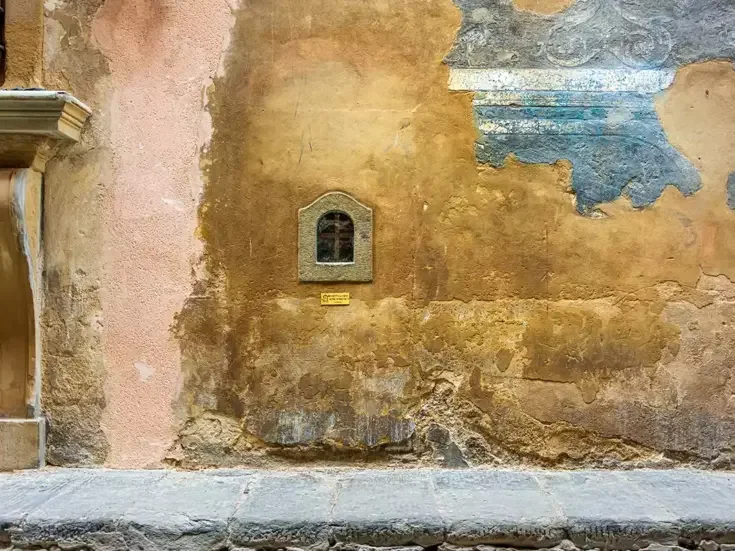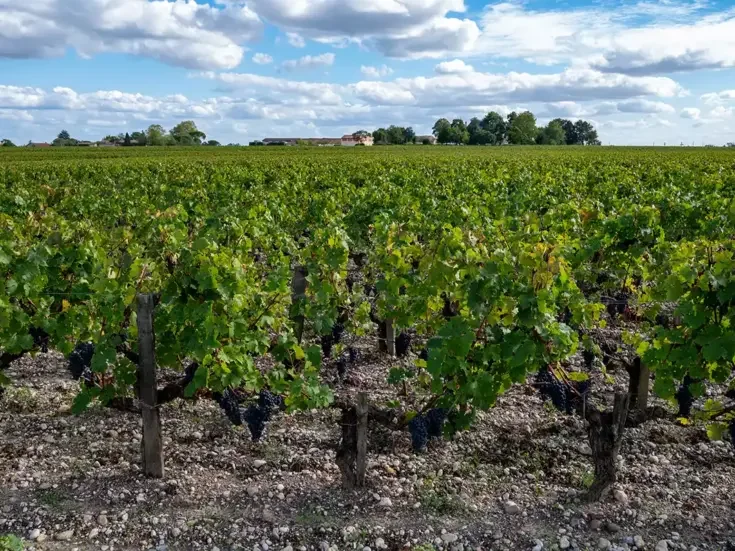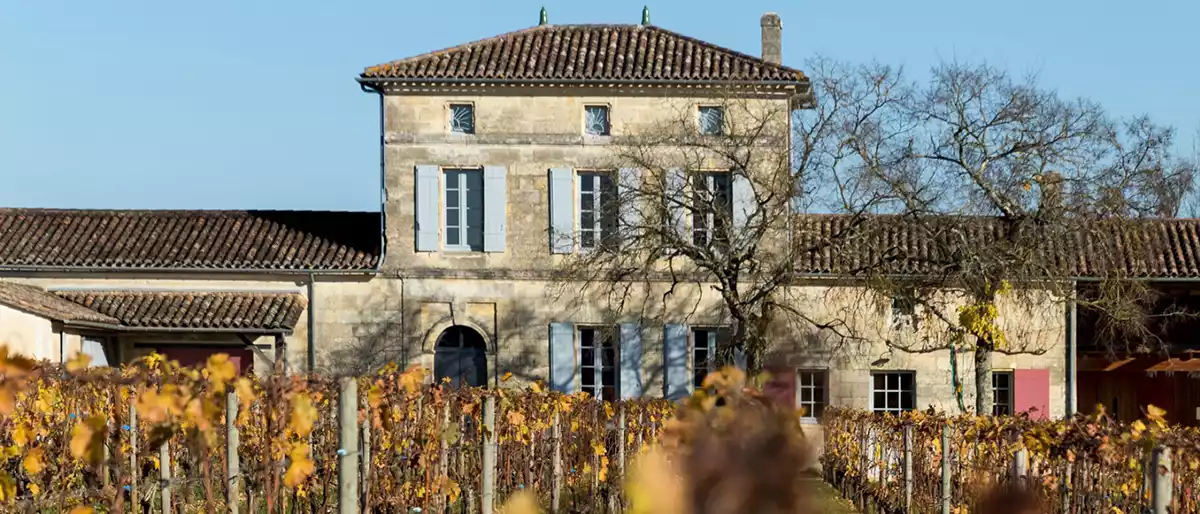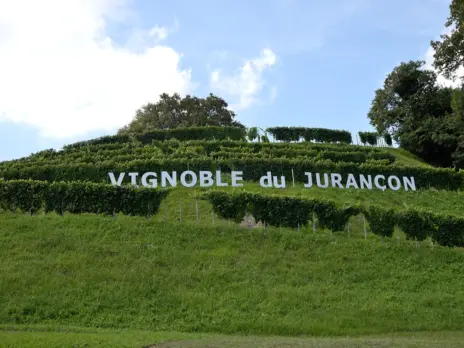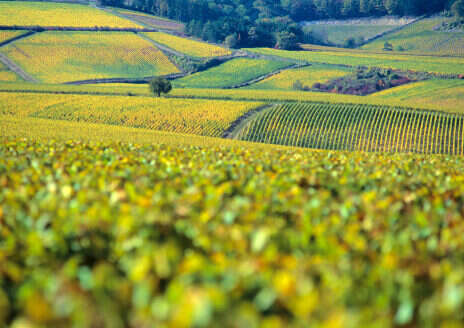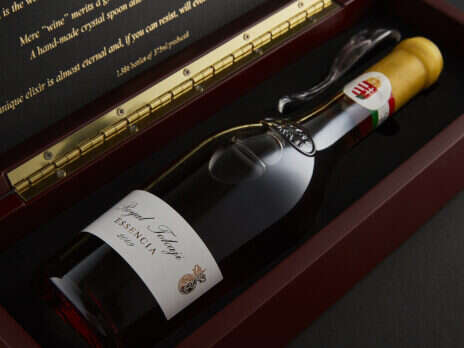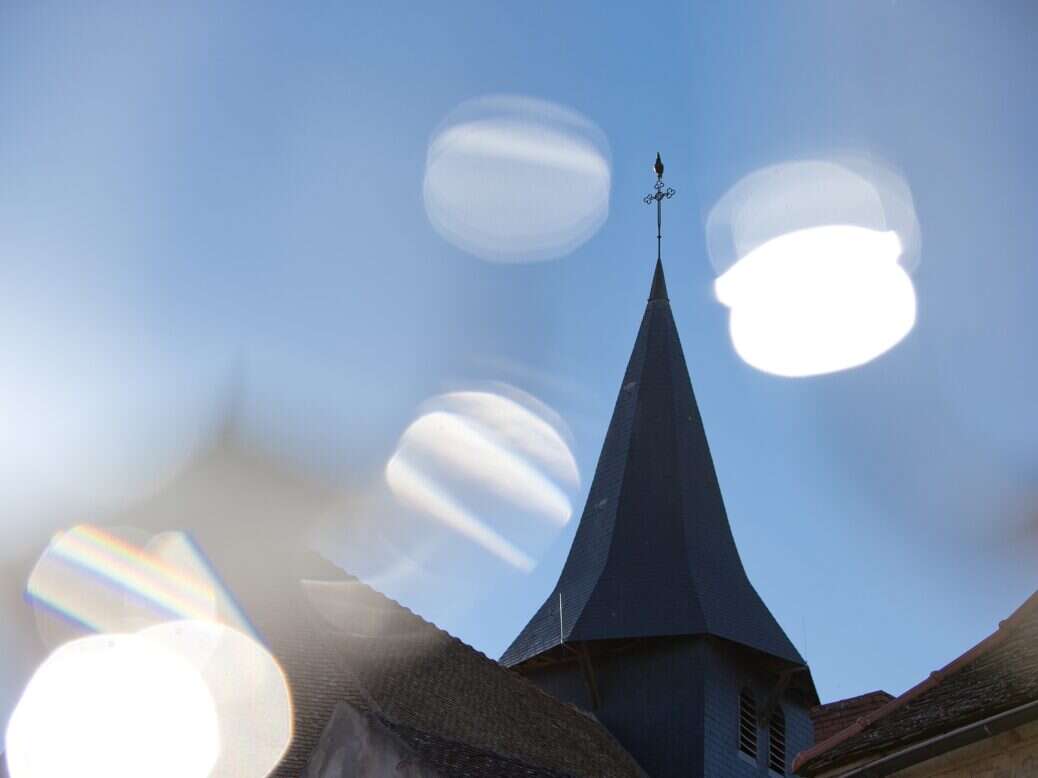
One of Burgundy’s most celebrated domaines, Domaine Leflaive now has a niche négociant business, Esprit Leflaive. Sarah Marsh MW reports from the London launch—and tastes the impressive collection of 2018-vintage wines.
Domaine Leflaive’s latest venture, Esprit Leflaive was launched in London at Scott’s Restaurant at a tasting jointly hosted by Domaine Leflaive’s UK importers, Armit Wines and Corney & Barrow.
Nicolas Clerc MS, buyer for Armit Wines, assembled an impressive gathering of some 30 sommeliers on a Monday morning, eager to sample 2018 Esprit Leflaive, the first vintage of this niche négociant range. The general manager of Domaine Leflaive, Pierre Vincent, came over from Burgundy to present the wines.
Once upon a time in Burgundy there was a partnership between growers who supplied grapes to the négociants such as Maison Champy, which was the first maison to be founded, in 1720. By the later part of the 19th century a few growers began stepping out alone.
Domaine de la Romanée Conti and the Gros family were among the first to bottle their own wines with Marquis d’Angerville, Henri Gouges, and Ponsot following in the 1920s.
Meanwhile the négociants began acquiring their own property and over time the traditional model has dissolved. Nowadays many négociants, including Maisons Chanson and Bouchard Père et Fils, are substantial landholders and have much greater emphasis on domaine wines, particularly from the Côte d’Or, while their négociant activities are largely confined to their more entry-level wines.
It’s topsy turvy since many domaines now have a négociant activity on the side. Domaine Dujac was among the first domaines that I recall making a négociant range. Jacques Seysses and his son Jeremy established Dujac Père et Fils in 2000 to supply restaurants and encourage new customers to explore Dujac wines at a lower price point.
Today this strategy is rarely commercially viable for wine from the principal villages on the Côte d’Or. The grapes are simply too expensive. To give you an idea of inflation, in 2021 the price of a barrel of Puligny village wine would have bought barrel of a 1er Cru from Gevrey-Chambertin in 2016. (Red is bought in grapes. A barrel requires 300kg [661 pounds] with a bit more for topping the barrels, while white is traditionally, but not always, bought in must.)
It is not surprising to find micro-négocants selling wine from the same climat as a domaine at a higher price.
However it may be the only way in which a domaine can grow their business on the Côte d’Or where land prices have escalated. Some domaines have sought land on the cheaper Hautes Côtes. Once rather marginal, since the fruit typically ripens two weeks later than the Côte, with global warming these vineyards are coming into their own.
There are lovely examples from Jean-Noel Gagnard from the Hautes-Côtes de Beaune and on the Hautes Côtes de Nuits, Michel Gros had the foresight to invest long ago and has produces delicious and affordable red and white wines from well established vineyards. Meanwhile, Ghislaine Barthod and Jean-Marc Blain (Domaine Blain-Gagnard) have foraged in the Beaujolais where their adult children now run their satellite domaines.
Esprit Leflaive: Grapes not land
If buying land is not an option, buying grapes has been an attractive alternative, although finding good grapes and growers in recent vintages has become increasingly difficult.
There is still decent value and availability from the Côte Chalonnaise which has enabled domains such as Jean-Marc Pillot to extend his business to include his adult son.
Affordable wine can still be made from Auxey-Duresses, but grapes from St-Romain have become pricy. Not so long ago, a négociant such as Oliver Leflaive would have bought St-Romain to put in their Bourgogne. Not any more.
Others go for broke with their négociant activity and make (or purchase to mature) a barrel of grand cru. This can be a smart move as there’s greater profit margin on grand cru. Jean-Marie Fourrier used a savvy business model where investors put up the capital in advance for his négociant barrels of grand cru.
Perhaps the most appealing method for a domaine and their customers (as the price need not exceed that of the domaine) is to swap fruit, must or even wine with a friendly domaine. A swap of several barrels of a village for one of grand cru is a good way to extend a portfolio upward or down. I find an increasing number of red and white Corton popping up in different cellars and village wines at others.
Among the latest domaines to launch a small négoce range is Leflaive. Anne-Claude Leflaive had already extended the domaine’s land holding to include vineyards in the Mâconnais, but this new venture is a négociant, quite traditional in that it stretches from Chablis to the Mâconnais with fruit sourced from growers who share the same ethos as Domaine Leflaive and manage their vineyards organically or biodynamically.
Bereft without red
The impetus came from general manager Pierre Vincent who joined Leflaive in 2017 from Domaine Vougeraie in the Côte de Nuits. At Domaine Vougeraie he managed over 30 cuvées many of them red and he found himself bereft in his new role without the red side of production.
After the 2017 vintage Vincent suggested to Brice de La Morandère (Anne-Claude’s nephew) that he might make some red wine. Red is not unknown at Leflaive. I particularly liked Meursault, Premier Cru Sous le Dos d’Ane before the Pinot Noir was grubbed up to plant Chardonnay. Vincent planned a relatively small production of 20,000 bottles in 2018, which in 2022 has maxed out at 40,000 bottles.
Vincent explains how he carefully chose the growers from whom to source fruit, describing the relationships as “friendly partnerships.” His influence in the vineyard starts with the pruning and ends with the harvest made by Domaine Leflaive’s own pickers at the moment Vincent decides.
“It’s not really controlling,” he says, “there is a lot of conversation.”
The arrangements are based on a handshake. So very Burgundian. I’m sure the growers are flattered to be chosen by such an illustrious domaine, and Leflaive pay more than the BIVB price to ensure quality, so everyone is happy.
Each cuvée is made with fruit from a single grower. There is no blending. The fruit is brought to Puligny for vinification and maturation. When the first red grapes arrived, Vincent says he was like “a child at Christmas.”
For the red winemaking, he uses wooden vats. “I am not a fan of stainless steel for Pinot Noir. Oak has more thermal inertial. I use mainly remontage with just two pigeage for each wine in 2018. In 2020 there was only remontage. I like a long and slow vatting of three weeks. It starts cold at 13-14 degrees for a cold maceration for five to seven days. Then the temperature is not controlled. It is very important not to control everything with Pinot Noir.”
Whole cluster is evidently something Vincent likes, but he says he’s not dogmatic. The Nuit-Saint-Georges included no whole bunch in 2018. Vincent explains that there were three hail storms in 2018, which were early enough to not affect the quality, (it’s a lovely wine), but the the fruit had to be de-stemmed.
Tasting the reds, there is a marked spicy-sweet floral, almost exotic, aroma common to all three cuvées, which I thought was a result of whole bunch until I learnt there were no stems in the Nuit-Saint-Georges.
So it must be the oak, which is largely Chassin and Francois-Frères. It didn’t smell like the latter so maybe it’s the Chassin barrels used on red wine. I usually encounter Chassin on whites. Or perhaps it was something to do with the fermentation in 2018.
Esprit Leflaive whites: Domaine-style winemaking
The white wines are made pretty much the same way as the domaine, although Vincent uses a mixture of concrete eggs and demi-muids rather than barriques. After a year the wines are moved on fine lees to stainless steel for the second winter and bottled in the spring under Diam with a sensible 20-25ppm dose of sulfur. (About 60 total).
Using Diam, Vincent says he has been able to lower the sulfur addition, than previously when the wines were under cork. There was a little reduction on two whites, which Vincent attributes to the lees ageing, but nothing I thought out of the ordinary. Actually I don’t mind a little reduction on reds, although there wasn’t any.
We are all familiar with the problems of pre-mox in white Burgundy and Domaine Leflaive’s wines were certainly among those affected. Vincent believes moving the wines in August from one cellar to another in the village was the issue, particularly in the warmer vintages. The cellar by the church has now been extended and the wine are moved within this cellar using nitrogen.
One of first changes Vincent made when he joined the domaine was to extend the ageing process of domaine wines, extended to the négoce, to include a year in bottle. Hence the 2018s have just been released. As it happens the 2018, and I speak generally, is a warm vintage that really benefits from some bottle age, unlike the easy going 2017, which was attractive and accessible from the get-go.
The 2018 vintage was never an easy charmer, born of a hot dry summer with some shrivelling of grapes. It was not a straightforward year for reds in the winery with many stuck fermentations and high VAs, but with time in bottle the 2018 reds are settling down and have lost their dark plum and Porty notes.
They were always radically different from tantalising red fruit, sweeter tasting 2019s. The 2018 reds are more variable than 2019, but the best can be very good and often with the structure to age rather well.
As for 2018 whites, those picked in good time, have a firm and savoury style enlivened fresh tasting sapidity. Almost as if they had sucked the minerality from limestone, which of course they can’t, not least as minerals are absorbed in solution, but the idea is rather alluring.
Vincent started Esprit with seven cuvées in 2018 with a further three added in 2019, including Chablis, Premier Cru Montmains. In 2018 there were 7ha (17 acres) for the négoce wines. In 2022 it grew to 9ha (22 acres).
The design of the labels for Leflaive Esprit differ marginally from the domaine, although blink and you’ll miss it. However the name defines the difference, which is important as I feel that too many domaines, to all intents and purposes, pass off their négociant wines as domaine. The number of bottles produced is given on the label. In 2018 for example there were 600 bottles of Corton Charlemagne.
“The vision,” says Vincent, “is to stay boutique.”
Tasting Esprit Leflaive
Esprit Leflaive, Chablis Premier Cru Fourchaume 2018
Seductive ripe citrus aroma with a warm enveloping character. The strike is rich and earthy, spreading into a broad palate with tension on the finish. It is both glossy and rocky. Quite punchy with a some oak showing which is not typical for Chablis, but it finishes on a salty note. It feels like Chablis made by a Côte de Beaune producer. 2022-28
Vincent used concrete eggs, which he likes for their exchange with oxygen, and 600 litre barrels. “I wanted to respect the mineral Chablis style, but give it a Leflaive touch.” 2088 bottles were made.
Esprit Leflaive, Pouilly-Fuisse 2018
Ripe greengage on the somewhat exotic aroma. Juicy up front with a succulent mid palate showing tropical notes. It is generous and fruity, but also quite soft and diffuse.
Vincent describes the soils as clay dominant. It’s more southerly and ripens earlier than the domaines’s Pouilly-Fuissé and is harvested four days before. The grapes are brought to Puligny in a temperature controlled truck.
“They are cold when they are pressed,” says Vincent, “which helps preserve the aroma.” There is 15% new oak. Vincent adds, “It’s a good vintage for Chardonnay, not as high in alcohol as 2019 and the pHs were lower too.”
Esprit Leflaive, Pouilly-Fuissé Clos Reyssier 2018
Clos Reyssier was classified as a premier cru from 2020. In Chaintré where the limestone shows on the upright, tense and intense aroma. Quite a twang on the front palate. It’s straight and channelled with plenty of energy. There is some reduction here, which I like and attractive cold sapidity on the finish. Much more interesting. 2022-26.
Esprit Leflaive, Savigny Les Beaune Premier Cru Les Vergelesses 2018
Ten barrels. The aroma is a bit muddy. Creamy up front to a full-ish, earthy and rounded middle, which narrows. It lacks some depth mid palate and much follow through. These vines were planted in 2009. Not that young, but maybe why it’s short on intensity and finish.
Esprit Leflaive, Corton Charlemagne Grand Cru 2018
Certified biodynamic. There were two barrels and the oak is second fill. Focused, straight and channelled. Pure and reserved. Lean, but has good intensity. I like the oyster shell character and cool mineral tension. It fizzles on a salty note to finish.2025-35
Esprit Leflaive, Pommard 1er Cru Les Arvelets 2018
An extrovert scented, pink and floral aroma with a hint of violets and mocha. On the palate lightly stalky, slightly herbal and menthol. It is delicate and rather refined for Arvelets, which is a climat on red clay with a more Southerly exposition and can be more robust. It’s an old vineyard. The cool draught from the combe is definitely contributing to the attractive freshness in this hot vintage. It also shows this colder influence on the sappy, lightly chewy finish, no doubt also a consequence of the 50% whole cluster. 2024-2028
Esprit Leflaive, Nuits-Saint-Georges 2018
This comes from Les Poisets—a village parcel in the South of Nuits Saint Georges, under premier cru Les Cailles. Slightly exotic floral aroma. Rather suave. Fruity and supple upfront with chamois leather richness coupled with liquorish in the middle. Good depth and density. Notes of tarragon on the finish, which is really quite long for a village wine. Over performs. From 2022-27
Esprit Leflaive, Corton Grand Cru Les Grandes Lolières 2018
Perfumed and slightly chocolatey aroma which also shows deviously ripe hedgerow fruits. Maybe more new oak, but it’s quite an elegant Corton. Succulent and fruit driven with juicy acidity and vibrancy. It is not especially deep, but has good energy. However it is assertively stalky to finish.
Having spoken with Pierre about this after the tasting, it seems he has reduced the quantity to 50% in 2019. 2018 was a good vintage to use whole bunch, to give a sense of freshness to balance the richness of the fruit.
Maybe he was a bit over enthusiastic, but in time I think it will integrate. From 2026-32
Three barrels were made in 2108. Vincent remarks that the young grower is working biodynamically (certified) and very passionate about this. He has two hectares and sells a little to Leflaive. Seems it is the same producer for both red and white Corton. 80% whole bunch. 30% new oak.
I clearly have favourites. There were wines, including the village Nuit-Saint-Georges and Corton-Charlemagne, which were good examples of the terroir and a couple of wines with which I was a little underwhelmed. Apropos my early comments on pricing, of course the Esprit Leflaive wines are priced well below Domaine Leflaive’s, but they are seriously punchy.
